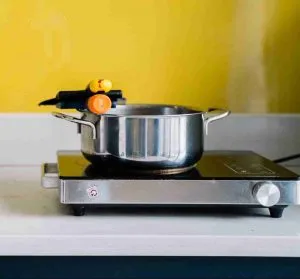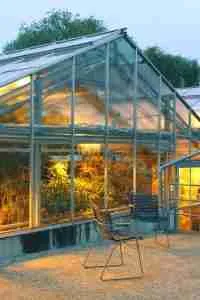Contents
ToggleKey Takeaway:
- A greenhouse maximizes plant growth: Greenhouses create a controlled environment that allows plants to thrive by providing optimal conditions such as temperature, humidity, and protection from pests and diseases.
- A greenhouse utilizes sunlight effectively: Greenhouses use transparent materials that let sunlight in and trap heat, creating a warm and well-lit environment for the plants. Additional artificial lighting can be added to supplement natural sunlight.
- A greenhouse requires proper ventilation and irrigation: To maintain a healthy growing environment, greenhouses need proper ventilation to regulate temperature and humidity. Irrigation systems ensure plants receive adequate water and nutrients, promoting optimal growth and productivity.
Introduction: Understanding the Benefits of a Greenhouse
A greenhouse is a structure that harnesses the power of sunlight to create an optimal environment for plants. This allows them to grow in controlled conditions, regardless of the outside weather.
The benefits of a greenhouse are numerous, ranging from extended growing seasons to protection from pests and diseases. Greenhouses also provide better temperature and humidity control, resulting in healthier and more productive plants.
In addition, they allow gardeners to experiment with different plant varieties and grow crops that wouldn’t typically thrive in their climate. For instance, greenhouses offer a controlled environment suitable for endeavors like propagating philodendron.
By understanding the benefits of a greenhouse, you can optimize your gardening efforts and enjoy a year-round supply of fresh produce!
A pro tip for greenhouse enthusiasts is to carefully plan the layout and design of the structure to maximize its efficiency. Consider factors such as sunlight exposure, ventilation, and insulation to ensure optimal conditions for plant growth.
How Does a Greenhouse Work?

A greenhouse utilizes a combination of sunlight, insulation, and a controlled environment to create a favorable growing conditions for plants.
By trapping the sun’s heat and preventing it from escaping, a greenhouse helps maintain a higher temperature compared to the surrounding environment.
This warmth stimulates plant growth and protects them from extreme weather conditions. The structure is typically made of glass or plastic that allows sunlight to pass through while preventing heat from escaping.
In addition, the greenhouse can be equipped with ventilation systems to regulate temperature and humidity levels. These features enable plants to thrive and extend the growing season.
A remarkable aspect of greenhouse technology is its ability to cultivate plants that are not native to the local climate. Farmers and gardeners can utilize greenhouses to grow a wide variety of crops and flowers all year round, expanding their growing possibilities. This includes understanding plant cycles, such as determining if tulips come back each year.
Throughout history, the concept of the greenhouse has evolved and been refined to optimize plant growth, leading to significant advancements in agriculture and horticulture.
Overcoming the Lack of Sunlight

To address the issue of inadequate sunlight in a greenhouse, several strategies can be employed. One effective solution is the installation of artificial lighting systems that mimic the spectrum and intensity of sunlight. These lighting systems can be adjusted to provide the necessary wavelengths for optimal plant growth, allowing plants to thrive even in the absence of natural sunlight.
Furthermore, innovative technologies such as light-emitting diodes (LEDs) have been developed to supplement or replace natural sunlight. LED lights can be specifically tuned to emit the wavelengths that plants require for photosynthesis, ensuring optimal growth conditions within the greenhouse environment.
In addition to artificial lighting, the greenhouse structure itself plays a crucial role in maximizing sunlight usage. Strategic positioning and orientation of the greenhouse can help capture sunlight throughout the day, optimizing light exposure for the plants inside. Additionally, the use of translucent or transparent materials for greenhouse walls and roofs allows sunlight to penetrate and reach the plants, further overcoming the challenge of limited sunlight.
In order to ensure the best possible growth conditions, it is important to regularly monitor and adjust the lighting and environmental factors within the greenhouse. This includes maintaining proper temperature and humidity levels, as well as regularly assessing the lighting setup to ensure the plants are receiving adequate light for their growth.
By implementing these strategies and utilizing modern technologies, greenhouse operators can effectively overcome the lack of sunlight and provide optimal growing conditions for their plants. Don’t miss out on the opportunity to maximize plant growth and productivity by addressing the challenge of insufficient sunlight in your greenhouse!
Meeting the Plants’ Other Needs
Plants Have Diverse Needs
To sustain plant growth, it is crucial to understand and fulfill their various requirements. Meeting these needs goes beyond just providing light and water. By catering to the plants’ unique requirements, we can ensure their optimal growth and health. Learn more about the intricacies of how plants grow.
Ensuring Optimum Conditions for Plant Growth
Apart from light and water, maintaining plants involves creating an ideal environment that includes factors such as temperature, humidity, and air circulation. Keeping the right temperature ensures that plants can carry out essential processes like photosynthesis efficiently. In addition, controlling humidity levels prevents excessive moisture or dryness, which can negatively impact plants. Proper air circulation not only aids in distributing nutrients evenly but also helps prevent diseases.
Nurturing Soil Health
An often-neglected aspect of care is providing nutrient-rich soil. Soil serves as a foundation for plants to establish their roots and absorb essential minerals. By enriching the soil with organic matter and fertilizers, we can support robust plant growth and provide them with the necessary nutrients. Additionally, regular soil testing helps us assess nutrient deficiencies and take appropriate corrective measures.
Promoting Pollination and Pest Control
Catering to those needs includes facilitating pollination by attracting pollinators such as bees and butterflies. This can be achieved by planting flowers that provide nectar and creating a welcoming habitat for pollinators. Furthermore, pest control measures should be in place to protect plants from harmful insects and diseases. Implementing organic pest control methods such as using plants that repel ticks and regularly monitoring for signs of infestation ensures the well-being of the plants.
Conclusion: Maximizing the Potential of Your Greenhouse
A key aspect of harnessing the full potential of your greenhouse lies in strategically maximizing its capabilities. By implementing smart design choices and employing efficient cultivation techniques, you can optimize your greenhouse’s functionality.
Achieving this includes factors such as carefully managing temperature and humidity levels, selecting suitable crops, and utilizing innovative technology to enhance productivity.
Additionally, proper ventilation, irrigation systems, and regular monitoring of plant health play crucial roles in maximizing your greenhouse. Knowledge on specific crops, such as how to harvest asparagus, further optimizes the benefits of having a greenhouse.
Five Facts About How Does a Greenhouse Work:
- ✅ Greenhouses are made of translucent materials like glass or clear plastic to allow maximum access to sunlight for plant growth and photosynthesis. (Source: Team Research)
- ✅ The light energy that enters the greenhouse is absorbed by the plants, ground, and other surfaces, converting it to infrared energy (heat). (Source: Team Research)
- ✅ The heat energy, or infrared energy, is trapped inside the greenhouse due to the change in wavelength, making it difficult for heat to escape through the glass walls. (Source: Team Research)
- ✅ The trapped heat warms the air inside the greenhouse, raising the temperature and creating a favorable environment for plant growth. (Source: Team Research)
- ✅ Greenhouses are most useful in areas with plenty of sun, as sufficient sunlight is essential for photosynthesis and providing the light and temperature conditions necessary for plant growth. (Source: Team Research)
FAQs
How does a greenhouse increase fruit production?
The greenhouse provides plants with light and warm temperatures, which are essential for their growth. It allows you to grow plants that may not survive in your climate, leading to increased fruit production.
What materials are used to construct a greenhouse?
Greenhouses are typically made of translucent materials such as glass or clear plastic. These materials allow maximum access to sunlight, which is necessary for plant growth.
How does heat absorption work in a greenhouse?
When sunlight enters the greenhouse through the glass walls, it is absorbed by the plants, ground, and other surfaces. This absorbed light energy is converted into infrared energy (heat), with darker surfaces absorbing more energy and generating more heat.
How does a greenhouse trap heat?
The infrared energy (heat) generated inside the greenhouse has a different “shape” than light energy, making it difficult for it to escape through the glass walls. This trapped heat raises the temperature inside the greenhouse, as it stays trapped and cannot easily escape.
Why is it important to consider thermal mass in a greenhouse?
Thermal mass is the ability of a material to store heat. In a greenhouse, materials with high thermal mass, such as stone, brick, or water, can absorb and store excess heat during the day. This stored heat is later released at night, keeping the plants warm and protecting them from lower nighttime temperatures.
What are some options for adding artificial heat to a greenhouse?
If increasing thermal mass is not feasible, an artificial heat source, such as a space heater, can be used in the greenhouse. It is beneficial to choose a heat source that can be linked to a thermostat, ensuring that the temperature inside the greenhouse remains within the desired range. Greenhouse supply stores offer various artificial heaters designed specifically for greenhouse use.
Additional Reading
Understanding the mechanisms and benefits of a greenhouse provides a gateway to broader horticultural knowledge. Here are some related topics of interest that expand upon various aspects of gardening and plant care:
- Does Flax Seed Go Bad?: As you cultivate a green thumb, also delve into the shelf life and storage techniques for natural products like flax seeds.
- Strawberry Vanilla Hydrangea Tree: A deep dive into the care and cultivation of this mesmerizing hybrid plant. It could be a fantastic addition to a greenhouse garden.
- Watering Orchids with Ice Cubes: Orchids can be finicky about their care routines. Discover the pros and cons of using ice cubes as a watering method, an innovative technique that may find its place in greenhouse management.
- How to Grow Cherry Tree from Seed: A comprehensive guide to nurturing cherry trees from the very beginning. Greenhouses can be ideal environments for starting such delicate processes.
- Growing Pumpkins in Small Spaces: Whether you’re using a greenhouse or a compact garden area, this article provides insights into making the most of limited spaces for bountiful harvests.























































